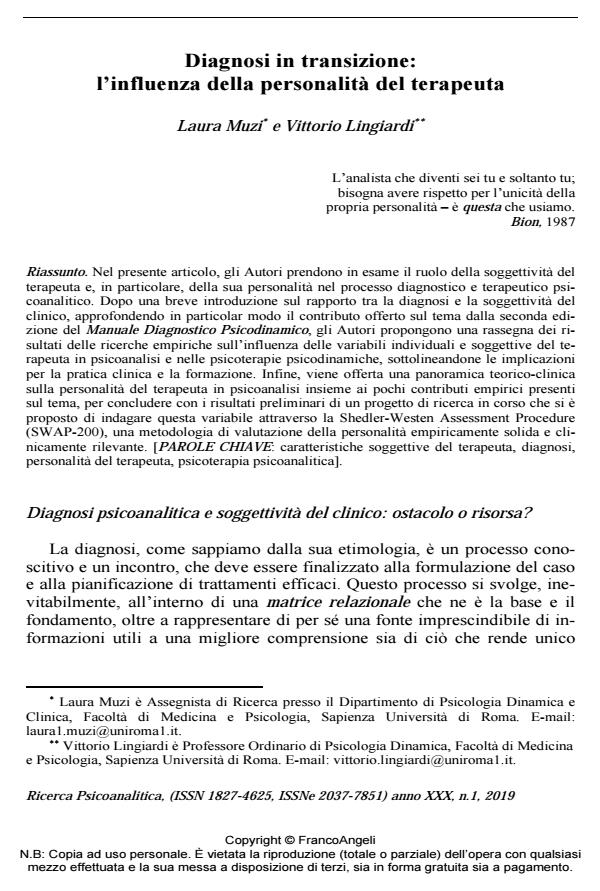Diagnosis in transition: The influence of therapist personality
Journal title RICERCA PSICOANALITICA
Author/s Laura Muzi, Vittorio Lingiardi
Publishing Year 2019 Issue 2019/1
Language Italian Pages 18 P. 73-90 File size 206 KB
DOI 10.3280/RPR2019-001006
DOI is like a bar code for intellectual property: to have more infomation
click here
Below, you can see the article first page
If you want to buy this article in PDF format, you can do it, following the instructions to buy download credits

FrancoAngeli is member of Publishers International Linking Association, Inc (PILA), a not-for-profit association which run the CrossRef service enabling links to and from online scholarly content.
In the present article the authors examine the role of the therapists’ subjectivity, in particular their personality, in the diagnostic and therapeutic process over the course of psychoanalytic treatments. First, they provide an introduction on the relationship between diagnosis and the clinician’s subjectivity focusing on the contribution of the second edition of the Psychodynamic Diagnostic Manual. They then present a review of the empirical evidence on the influence of the therapist’s individual and subjective variables in psychoanalysis and psychodynamic psychotherapy, stressing their implications for clinical practice and training. Finally, they present a theoretical-clinical overview on the therapist’s personality in psychoanalysis along with the few empirical studies on this topic, also reporting the preliminary findings of an ongoing research project which explored this variable through the Shedler-Westen Assessment Procedure (SWAP-200), an empirically validated and clinically relevant psychometric procedure designed to assess personality functioning.
Keywords: Therapist subjective variables, diagnosis, therapist personality, psychoanalytic psychotherapy
- Ricerca clinica e ricerca empirica Emilio Fava, in Ricerca Psicoanalitica /2021
DOI: 10.4081/rp.2021.309
Laura Muzi, Vittorio Lingiardi, Diagnosi in transizione: l’influenza della personalità del terapeuta in "RICERCA PSICOANALITICA" 1/2019, pp 73-90, DOI: 10.3280/RPR2019-001006